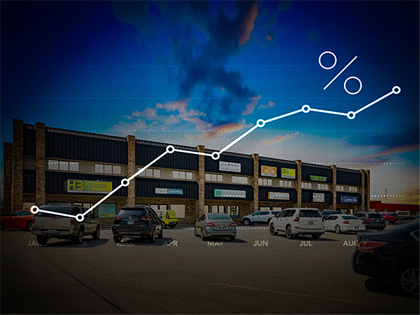
Are Cap Rates Moving?
To understand whether cap rates are moving, one must first understand their influence on the world of commercial real estate investing. A cap rate, or capitalization rate, is considered a real estate valuation measure that plays a role in comparing different real estate investments. The cap rate calculation is the annual net operating income (NOI) ratio to the asset’s market value. This provides the rate of return for professionals to use in comparison.
Now more than ever, the importance falls on the movement of these cap rates. In a year like 2022, it can seem like nothing is certain in the world of investments. However, understanding this valuation can give you insight that benefits your financial decisions in the long term. Learn more with Sands Investment Group to get started.
What Factors Affect Cap Rate?
As in the rest of the world of investing, specific factors can influence cap rates. It comes down to three main options that can make this number change. The first of these is macro-level economics and demographics. Next, the micro-level market influences come in. Finally, the property type plays a role in changing the cap rate.
By seeing the influence of each of these factors, it is understandable that cap rates can vary by the area you are observing. However, the market as a whole maintains a similar direction depending on the macro-level economics of the country and the world.
How Can The Cap Rate Move?
The movement of cap rates depends on the factors that affect the quantities included in the ratio. The direction of cap rates is considered cyclical as they go up and down depending on how the market looks at a given time.
To see how the cap rates are currently moving, you have to look at the state of the market. Take interest rates, for example. When interest rates are low, you provide lower payments, allowing for lower monthly debt payments on a given property. The cap rate drives down by increasing the purchase price in the cap rate equation. Thus, when interest rates are low, generally so are cap rates. When interest rates are high, the cap rates usually rise as well.
Stephen Plourde of Sands Investment Group explains that buyers expect increased cap rates across multiple product types as a direct result of the finance-ability of NNN deals, precisely because of the recent and anticipated rise in interest rates.
As we look at the current market, Plourde explains that there are still 1031 exchange buyers at aggressive cap rates similar to the last 24 months; however, there is a disconnect between buyers and sellers, specifically when a buyer requires financing. “Smart sellers will sell their properties more quickly in today’s market when they recognize that the market has shifted. They must work collaboratively with their Investment Advisor to price their properties with a forward-looking approach,” says Plourde. Looking in the rear-view mirror will lead to sellers missing the buyers looking to transact in the 3rd and 4th quarters of the year.
Learn More With Sands Investment Group
Understanding cap rates is essential as you enter the world of commercial real estate investing. That is why you must work with a company with the research and data-driven expertise to back it. At Sands Investment Group, our team is ready to get you started from the beginning to help you make impactful deals. Don’t waste any time, and get started with us today! There is always more to learn as cap rates move and change. Learn more about investing in commercial real estate with Sands Investment Group today. Call 844.SIG.NNN or find out more on our website.
By submitting your information and signing up for email updates, you agree to SIG Online Terms of Use
